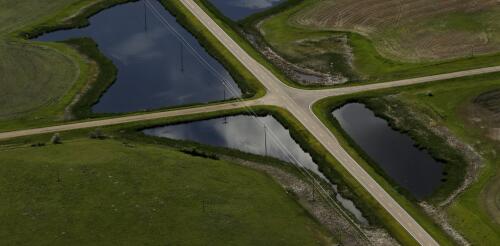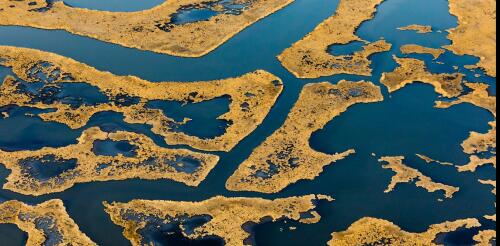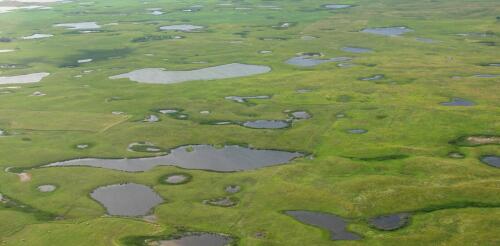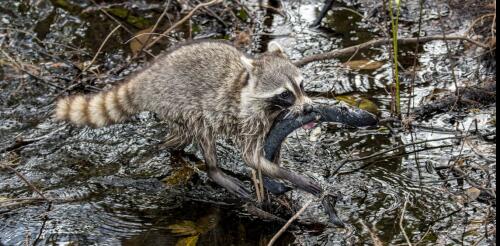Wetlands
Wetlands aren’t the most eye-catching ecosystems. They include swamps, bogs, fens and other places where soil is covered by water most of the time. But they perform a huge range of valuable services, from soaking up floodwaters to filtering out pollutants and providing habitat for thousands of species of mammals, fish, reptiles, insects and birds. In a high-profile 2023 ruling, Sackett v. Environmental Protection Agency, the U.S. Supreme Court greatly limited federal power to protect wetlands. According to one estimate, this ruling stripped federal protection from up to 90 million acres of wetlands across the U.S. Today, the U.S. is losing wetlands, mainly to development and agriculture, at an accelerating rate. With Congress polarized and gridlocked, new federal wetland protection laws are unlikely to be enacted in the next several years. Some states have stepped up to fill the gap, but others have instead chosen to roll back their existing protections. This comes despit...
Wetlands have flourished along the world’s coastlines for thousands of years, playing valuable roles in the lives of people and wildlife. They protect the land from storm surge, stop seawater from contaminating drinking water supplies, and create habitat for birds, fish and threatened species. Much of that may be gone in a matter of decades. As the planet warms, sea level rises at an ever-faster rate. Wetlands have generally kept pace by building upward and creeping inland a few meters per year. But raised roadbeds, cities, farms and increasing land elevation can leave wetlands with nowhere to go. Sea-level rise projections for midcentury suggest the waterline will be shifting 15 to 100 times faster than wetland migration has been clocked. Many wetlands, like these on Cape Cod, are now bordered by human infrastructure, including towns and roads. Lance Cheung/USDA I have been studying coastal g...
Arizona is one of the fastest-growing states in the U.S., with an economy that offers many opportunities for workers and businesses. But it faces a daunting challenge: a water crisis that could seriously constrain its economic growth and vitality. A recent report that projected a roughly 4% shortfall in groundwater supplies in the Phoenix area over the next 100 years prompted the state to curtail new approval of groundwater-dependent residential development in some of the region’s fast-growing suburbs. Moreover, negotiations continue over dwindling supplies from the Colorado River, which historically supplied more than a third of the state’s water. The Colorado River’s watershed extends across seven U.S. states and into Mexico. Use of river water is governed by a compact negotiated in 1922. Center for Colorado River Studies, CC BY-ND As a partial solution, the Arizona Water Infras...
The U.S. Supreme Court has ruled in Sackett v. EPA that federal protection of wetlands encompasses only those wetlands that directly adjoin rivers, lakes and other bodies of water. This is an extremely narrow interpretation of the Clean Water Act that could expose many wetlands across the U.S. to filling and development. Under this keystone environmental law, federal agencies take the lead in regulating water pollution, while state and local governments regulate land use. Wetlands are areas where land is wet for all or part of the year, so they straddle this division of authority. Swamps, bogs, marshes and other wetlands provide valuable ecological services, such as filtering pollutants and soaking up floodwaters. Landowners must obtain permits to discharge dredged or fill material, such as dirt, sand or rock, in a protected wetland. This can be time-consuming and expensive, which is why the Supreme Court’s ruling on May 25, 2023, will be of keen interest to developers,...
Wetlands are areas of land that are covered by water, or have flooded or waterlogged soils. They can have water on them either permanently or for just part of the year. Whether it’s year-round or seasonal, this period of water saturation produces hydric soils, which contain little or no oxygen. But this doesn’t mean that they are lifeless: Wetlands are full of unique water-loving plants and wildlife that have adapted to wet environments. Wetlands can take many different forms, depending on the local climate, water conditions and land forms and features. For example, swamps are dominated by woody trees or shrubs. Marshes often have more grasslike plants, such as cattails and bulrushes. Bogs and fens are areas that accumulate peat – deposits of dead and partly decomposed plant materials that form organic-rich soil. Trillions of dollars in ecological benefits Wetlands are important environments for many reasons. They provide ecological services whose value has...




